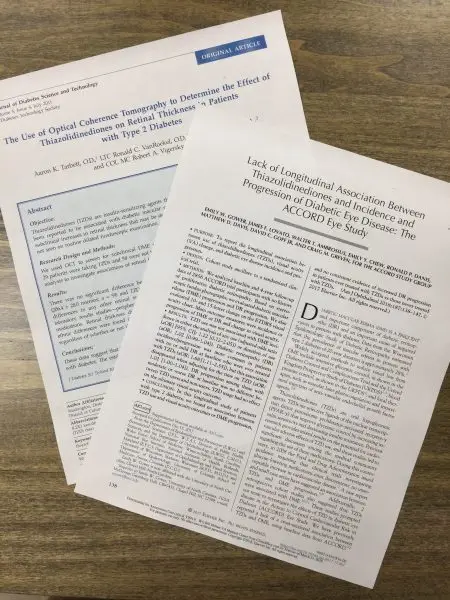Recently retinal specialists from Wake Forest and the University of North Carolina have confirmed the findings of Dr. Tarbett’s original research on thiazolidinediones (TZDs) and diabetic macular edema published in 2011.
Data from the Action to Control Cardiovascular Risk in Diabetes (ACCORD) Eye Study, a large multicenter study, funded by the National Eye Institute, was analyzed and found no associated risk of macular edema when using TZDs to treat diabetes. Thiazolidinediones such as Pioglitazone (ACTOS®) and rosiglitazone (AVANDIA®) are used to control blood sugar in type 2 diabetes by improving insulin sensitivity. After a number of earlier studies and case reports suggesting a link between diabetic macular edema and use of TZDs, Dr. Tarbett designed and conducted a study at Walter Reed Army Medical Center using optical coherence tomography to evaluate patients on TZDs. The macula is the center part of the retina that allows for fine visual acuity. Optical Coherence tomography is a new technique that allows more precise measurement of swelling, or edema, in the retina from blood vessels damaged by diabetes. Dr. Tarbett’s team of researchers were the first to use OCT technology in the study of TZDs and diabetic macular edema. As in the ACCORD study, no association was found between diabetic macular edema and TZDs.
Carolina Eye Doctors continues to use the same technology every day to evaluate the retinal health of our diabetic patients. Carolina Eye Doctors joins The American Optometric Association and American Academy of Ophthalmology in recommending yearly eye exams for all patients with diabetes.












